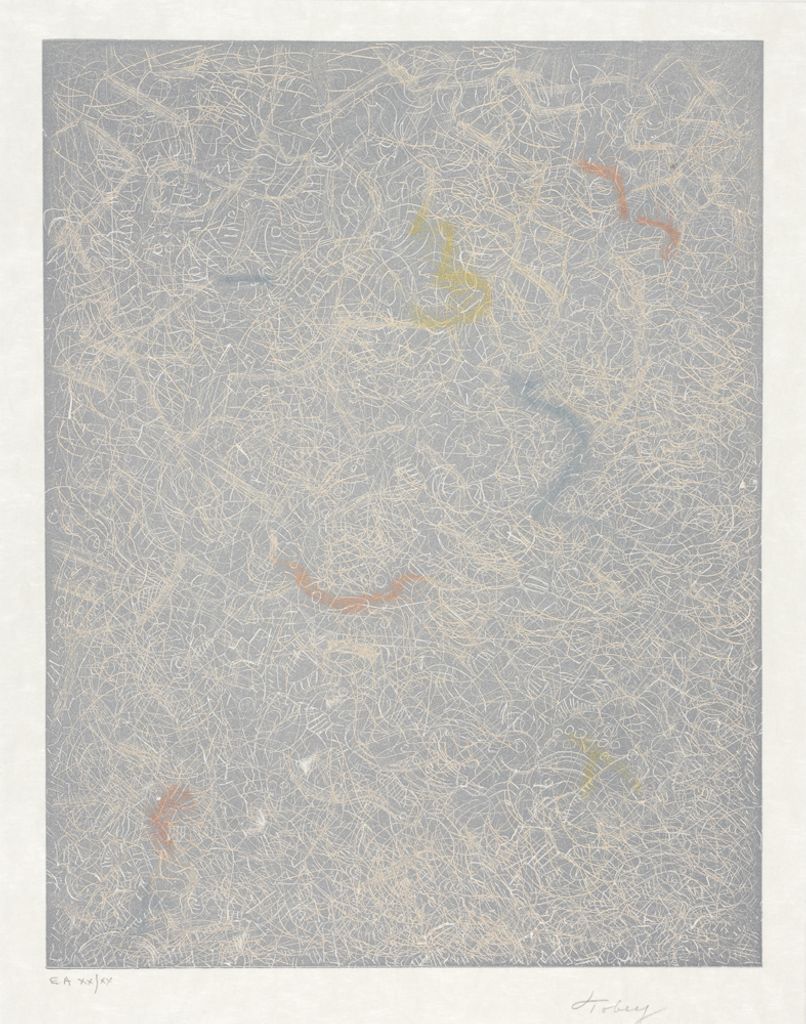Students Select: Frances Mack '24 on Mark Tobey's "Vibrating Surface"



From a few feet away, Mark Tobey’s “Vibrating Surface,” is a simple, muted-gray rectangle with a white paper border. But as you move closer, more details appear: pale, white squiggles cover the foreground, forming loops, doodles, and unintelligible letters in a gibberish script. Within the abstract design, there are several repeating patterns, including organic shapes, small circles, and short, parallel lines. In a few places, there are translucent overlays of color. Three red and two yellow curved lines intersect and lightly cover the underlying composition. The background of the piece, which can be seen in the negative spaces between the thinly etched lines, is a field of dark gray, with an almost granular texture.
Mark Tobey was an American painter and abstract artist. His work was inspired by his international travels, specifically the music that he heard while traveling and Chinese calligraphy. In 1935, Tobey developed his own unique visual language— seen in the gibberish script of this piece— referred to as “white writing.” White writing merged calligraphic characters with symbols from twentieth-century paintings. This writing style, combined with the all-over painting technique, came to distinguish Tobey’s work and influenced notable surrealist and abstract expressionist artists, such as Jackson Pollock.
I was initially drawn to this piece because of its name, “Vibrating Surface.” I’m currently taking a course about energy, its origins, and its impacts to fulfill my earth and environmental science requirements. The concept of a vibrating surface made me think of the energy that exists within all matter. When I looked closer at the piece with this in mind, the sgraffito scribbles became the darting, entropic paths of vibrating subatomic particles, and the picture became a sort of kinetic energy map. The detail in this piece makes it almost scientific, and I feel as though I could only truly understand it if I were to look at its details under the lens of a microscope.
After staring at this work for a few minutes, I began to look at it as not only a physical and scientific representation of energy, but a metaphorical one. John Galsworthy, an English novelist and playwright, referred to art as a constant source of human energy. He explained art as a uniting and renewing force, calling it a “continual, unconscious replacement, however fleeting, of oneself by another.” This idea is consistent with the modern understanding of art interpretation. One can return to the same piece countless times and face the puzzle of that work’s meaning in a slightly different way each visit. A piece as dynamic as “Vibrating Surface” has numerous interpretations and demands multiple visits, thus making it a source of energy, because of the ongoing thought and work that one must put into understanding it.
Frances Mack '24
Major: Scientific and Environmental Writing/Journalism
Minor: Museum Studies and Earth and Environmental Science